Hello! We are Ava and Christine, from MIT D-Lab, and this summer we are working with the Turkana Basin Institute and our PI, Dr. Eric Verploegen, to research evaporative cooling as a means of post harvest fruit and vegetable storage. In regions of the world where access to food preservation methods is limited, up to 50% of produce is lost during transport or at markets before it ever reaches households. In addition, many households are unable to preserve fresh produce for longer periods before it spoils. This project aims to provide an affordable and locally accessible solution for communities that lack access to electricity and vegetable preservation methods.
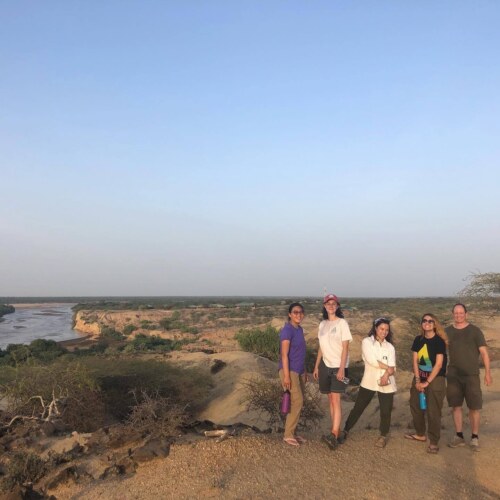
Christine, Maëlle, Ava, Gabby and Eric by the Turkwel River
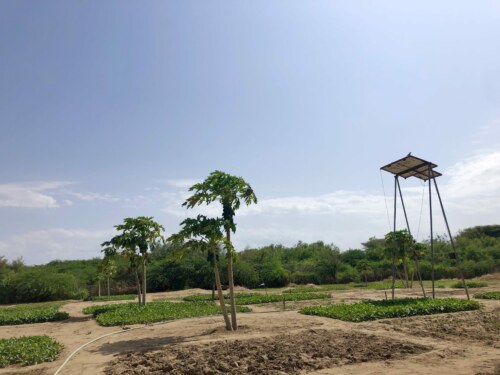
A community farm with leafy greens, pulses and fruit growing for sale in local markets. Photo credit: Ava Dijstelbloem.
Since arriving in Turkana two weeks ago, we have conducted interviews with vegetable vendors in Lodwar and Kerio to better understand the local supply chain and the need for cold storage in the Turkana region. We also spoke with a local farmer about her farming practices and how she is currently able to cool her vegetables post harvest. Both the market vendors and farmers mentioned that a significant amount of produce and income is lost each week due to spoilage. One market vendor reports losing 25-50% of her produce weekly. Through these interviews, we also learned that many people in the Turkana region already have an understanding of evaporative cooling and use this as a method to cool produce by sprinkling water or placing wet jute sack over produce in the evenings.
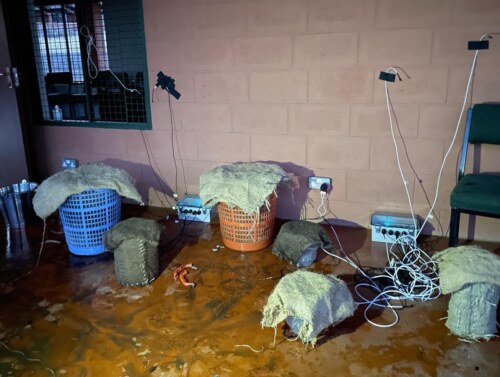
Basic prototypes set up for testing local materials and sensors. Photo credit: Christine Tang
In addition to conducting interviews, we have started an initial round of experiments to test the effectiveness of various materials and configurations for evaporative cooling. Our first experiment tests bulk absorber materials that are used to store water and allow for evaporation throughout the day. These bulk absorbers include: sand, charcoal, and charcoal briquettes. We sewed each material into a jute sack blanket which was placed on top of identical plastic buckets. Temperature and humidity sensors are placed inside each bucket so that we can compare the temperature and humidity inside to the ambient temperature and humidity. We are using a particle Argon to collect data, which uses wifi, so we can view our data at any time! Our other experiments that are currently running are testing different evaporative cooling configurations and structures made from local materials that we purchased in Lodwar. This upcoming weekend we will be testing prototypes at an archaeological field camp!
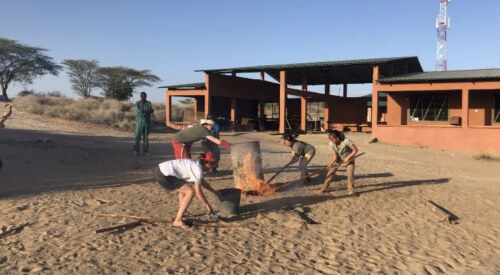
Turning a local invasive species, Prosopis juliflora, into charcoal to be used a bulk absorber in the evaporative cooling prototypes. Photo credit: Acacia Leakey.
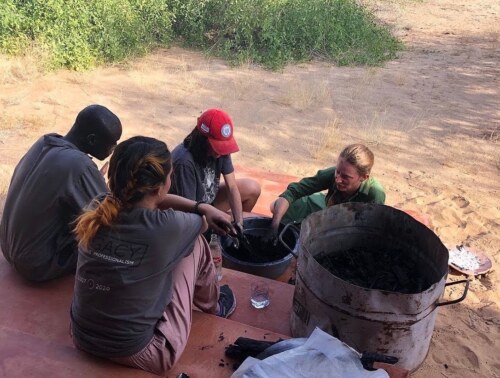
Making briquettes from the Prosopis charcoal. Photo credit: Ava Dijstelbloem.
The past two weeks have already been the most amazing experience, and we can’t wait to see what else we can learn about Turkana and evaporative cooling this summer!
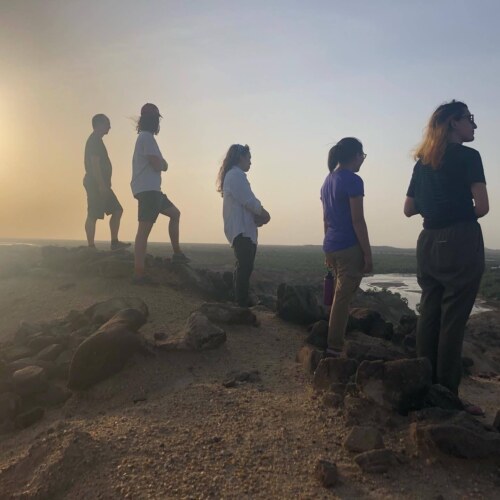
Eric, Maëlle, Ava, Christine and Gabby enjoying the view over the Turkwel river. Photo credit: Acacia Leakey
Article authored by: Ava Dijstelbloem and Christine Tang.





